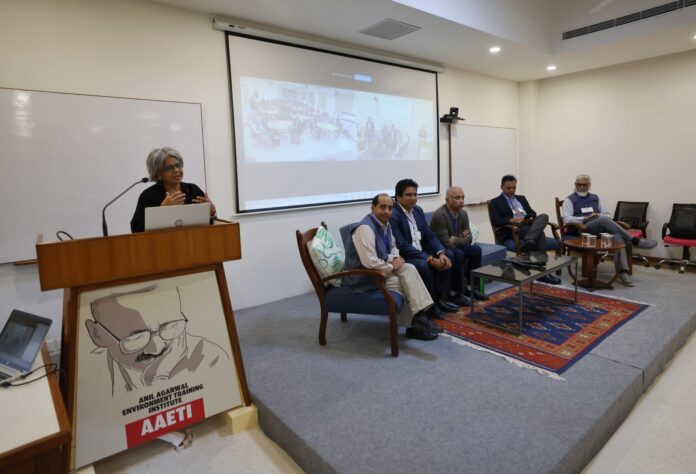“A ‘green’ transition in India’s energy sector is about reducing energy poverty and mitigating climate change. Renewable energy is critical for addressing both – the question is, is India ready for that transition? Will it be able to meet its 2030 target of achieving 50 per cent cumulative electric power capacity from non-fossil fuel sources?” asks Sunita Narain, director general, Centre for Science and Environment (CSE).
Narain was speaking at a ‘National Dialogue on Renewable Energy for an Equitable Green Transition’, organised by CSE at the Anil Agarwal Environment Training Institute, located in Nimli, near Alwar.
“The challenge for the country is to augment the power infrastructure, to make it clean, and to supply electricity at affordable rates. The good news is that the government of India is absolutely committed to this transition. An ambitious but feasible target has been set. We are hoping it will provide the green energy transformation that we desperately need,” says Narain.
India is working towards reducing its emissions intensity by 45 per cent by 2030 (compared to 2005 levels). It has also said, as Narain mentions, that by 2030, 50 per cent of its energy capacity will be from renewable (non-fossil fuel) sources. The country’s target for installed renewable energy capacity has been hiked – from 175 gigaWatt (GW) by 2022 to 500 GW by 2030.
India’s power demand is expected to surge by 2-2.5 times by 2047, says the 2024 Economic Survey. The Central Electricity Authority (CEA) says that the growing demand will need 777 GW of total installed capacity by 2030 – 44 per cent of this demand will be met by the 500 GW of non-fossil fuel sources that the country is planning to install.
The CEA says 426 GW of new renewables will need to be installed – solar power would be the driver of this clean energy future. It will supply 23 per cent of the total power generated in India by 2030.
“The coal question is not really about coal, but about what the country will do to increase the capacity and generation of clean energy,” says Narain. The acute energy poverty that India suffers from means the country will have to double its energy capacity and generation by 2030. Narain points out that this means that coal cannot be replaced – rather, it would have to be methodically displaced by clean energy sources.

